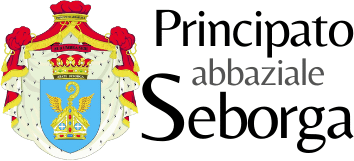Savoy possession
From 1730 A.D. to 1945
Following the notarial deed of Paris, the king, His Majesty Vittorio Amedeo of Savoy, gives the mission to take possession of Seborga.
A whole legion of the Savoy army goes to Seborgian’s territories.
When Savoy took possession, with “ample freedom of destination”, to justify the use of a legion, which could guarantee a hypothetical conflict with the Genoese, as provided for in the deed of sale of the lawyer Francesco Lea, Royal Delegate of the House of Savoy, the remaining sum of 132.000 lire of Savoy money, should have reached the Fathers of Lerino to be transferred to the Republic of Genoa, as ordered by the Sovereign Pontiff Benedict XIII and his delegate for the payment of the debts previously contracted by the monks.
Even knowing that this balance would never have reached or even been regularized, from the Republic of Genoa, which had exerted innumerable pressures on the Holy See to obtain authorization to sell the ancient principality of Seborga, the Savoy family took possession of Seborga in agreement with the monks at the same time as the signing of the notarial deed in Paris on January 30, 1729.
An effective taking of possession was organised, with the consuls and mayors of Seborga and all Seborghini’s subjects taking the oath in the presence of the Savoy garrison.
The monks of Lerino left the territory of the Abbey of the Principality of Seborga in 1730.
Thanks to this purchase, the Savoy continued their occupation, considered illegitimate by the Genoese.
Several spindles are kept in the State Archives of Turin, but they do not prove the actual payment of the debts, through the balance of 132,000 lire of Savoy money to the Republic of Genoa, due to the absence of the registered receipt.
It results from a deed drawn up and transcribed by Charles Franchi, the King’s archivist, on August 10, 1797, a guarantee of payment that the lawyer Francesco Lea gave to Father Benedict on the day of the sale of a sum equal to 186,000 lire of Savoy money.
This guarantee was to take effect if the balance of the 132,000 lire of Savoy money was not paid.
No information on this guarantee of payment to be returned at the time of the actual occupation of the territory by the Savoies of the former abbey principality of Seborga appears to have actually existed, nor is it mentioned in the original deed of sale. It is therefore legitimate to assume that the King of Sardinia had it drawn up in order to avoid further disputes with the Republic of Genoa, thus transferring responsibility to the Fathers of Lerino.
The Republic of Genoa, obviously unaware of the situation that Savoy had created thanks to the complicity of the monks of Lerino, the tacit assent of the Archbishop of Embrun and probably also because of the disinterest of the Supreme Pontiff, put pressure on the Holy See after the act to expel Savoy from Seborga.
Following numerous requests, Pope Benedict XIV was forced in 1748 to regularize the occupation of Savoy by issuing a papal bull (Bulla Pontificalis) which sanctioned the protectorate of Savoy at Seborga. This document is presumed to be kept in the secret archives of the Holy See (source Father Antonio Allaria Olivieri).
Obvious proof of this assertion can be seen every day in Seborga, in the statue erected by the seborgian citizen to King Umberto I, dated 20 September 1920, in which the textual quotation is inscribed: Seborga in the centuries faithful to the dynasty of the protectors.
The so-called Abbey Principality of Seborga was annexed to the dominions of Savoy on 30 January 1729, but the latter were not allowed to bear the title of Prince, which could only be taken by a monk; for this reason, the statue erected on 20 September 1929 shows: Seborga…and not, for example, the subjects of the Principality…
Seborga was administered by the Savoy until 1946 and after the advent of the Republic it was in fact annexed to the Italian State.
This is why today Seborga is an Italian territory.

